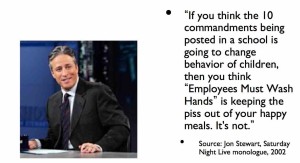With 64 kids now stricken with E. coli O157 related to visits at the Godstone farm in Surrey, the responses from the folks who run petting zoos could be a little more sympathetic, a little more reflective.
.jpg) Instead, as reported by the Guardian tonight (tomorrow in the U.K.), Geoff Ford, who runs Docker Park farm in Lancashire, where children can feed pygmy goats (see 1999 Ontario Western Fair outbreak, below) by hand and stroke rabbits, said any ban would affect "children’s environmental education” stating,
Instead, as reported by the Guardian tonight (tomorrow in the U.K.), Geoff Ford, who runs Docker Park farm in Lancashire, where children can feed pygmy goats (see 1999 Ontario Western Fair outbreak, below) by hand and stroke rabbits, said any ban would affect "children’s environmental education” stating,
"It’s going to get hyped up out of all proportion. It does away with children’s environmental education. It’s important that children realise what a chicken is, what a calf is – often they come here and ask ‘is that a horse?’… We have run our farm for 20 years with no problems. But there is only so much you can do if people don’t listen. The farm at the source of the outbreak in Surrey had big signs all over the place telling people to wash their hands, but some people don’t give a damn."
The U.K. Department of Health responded today by announcing that the advisory committee on dangerous pathogens would be reviewing the current guidance on open farms and will advise on the need for additional precautions "in the light of the current outbreaks of E coli O157."
A Department of Health spokesman told the Telegraph,
“The risk of infection from E-coli O157 through petting farm animals can be prevented by following everyday good hand hygiene measures.”
All of these statements have serious problems.
.jpg) • 64 kids sick with E. coli O157 is not hysteria, it sucks;
• 64 kids sick with E. coli O157 is not hysteria, it sucks;
• anyone who says, “we have run our farm for 20 years with no problems” is unwilling to learn and a hazard to public health;
• telling people to wash their hands is insufficient – proper handwashing requires access to proper tools;
• even with proper tools, signs are not enough, as we showed with our recent handwashing compliance study at a university residence when everyone was barfing and awareness was high; and,
• the best handwashing may not be enough — the E. coli O157:H7 that sickened 82 people in 2002 at the Lane County Fair in Oregon appears to have spread through the air inside the goat and sheep expo hall.
Scott Weese, a clinical studies professor at the University of Guelph (Canada) and colleagues reported in the July 2007 edition of Clinical Infectious Diseases that in a study of 36 petting zoos in Ontario between May and October of 2006, they observed infrequent hand washing, food sold and consumed near the animals, and children being allowed to drink bottles or suck on pacifiers in the petting area.
He observed similar failures yesterday.
So after 159 people, mainly children, were thought to be sickened with E. coli O157:H7 traced to a goat and a sheep at the 1999 Western Fair in London, Ontario, and eight years after all Canadian fairs were urged to adopt 46 recommendations to enhance petting zoo safety, many are still doing a lousy job.
Bill Marler has compiled a list of outbreaks related to petting zoos. We’ve previously reported at least 29 petting zoo related outbreaks in North America alone.
These petting zoo experiences raise questions: how best to motivate fair managers to provide petting zoos that are microbiologically safe? Should the urban public be allowed to interact with livestock at all? Should petting zoos be inspected, as restaurants are, and the results displayed?
If 64 sick kids is hysteria, conversation is useless and regulation required.
 On Monday, the county unveiled new inspection stickers for restaurant doors that include QR codes — two-dimensional bar codes — so that people with smartphones can scan the codes and get instant access to a restaurant’s inspection reports.
On Monday, the county unveiled new inspection stickers for restaurant doors that include QR codes — two-dimensional bar codes — so that people with smartphones can scan the codes and get instant access to a restaurant’s inspection reports. 




.jpg) enough for petting zoos to simply put up signs and hope bad things won’t happen. Good luck in court.
enough for petting zoos to simply put up signs and hope bad things won’t happen. Good luck in court..jpg) function and has to be given liquids through a feeding tube.
function and has to be given liquids through a feeding tube.  colored signs on doors like the medical officer of health recommended 40 months ago, it would have happened faster. Just like it did in Toronto, all those years ago.
colored signs on doors like the medical officer of health recommended 40 months ago, it would have happened faster. Just like it did in Toronto, all those years ago. Jonathan Sher of the London Free Press
Jonathan Sher of the London Free Press.jpg) Instead,
Instead, .jpg) • 64 kids sick with E. coli O157 is not hysteria, it sucks;
• 64 kids sick with E. coli O157 is not hysteria, it sucks;